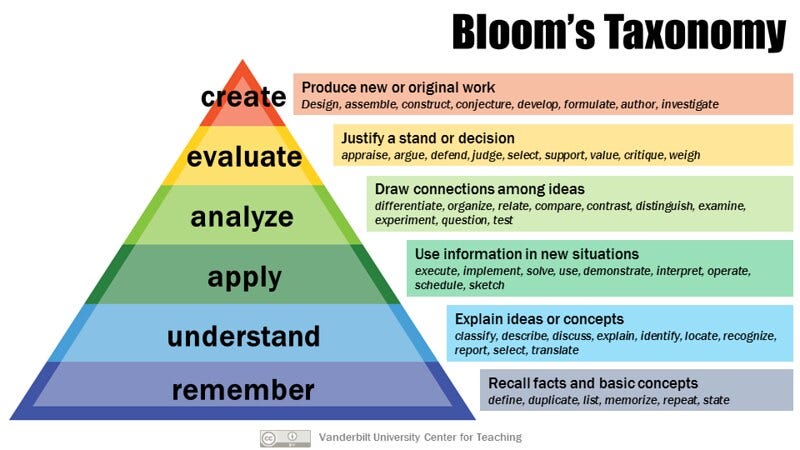A Discussion of “More than Words: Investigating the Format of Asynchronous Discussions as Threaded Discussions or Blogs”
I hope this does not offend any teachers — but I do not like discussion boards. And from what I have heard from my students, they do not either.
But without them, an online class is just students completing assignments by themselves, kind of like the old-fashioned correspondence class!
So while I may not like the discussion board assignment that seems to be a required part of an online class, I do feel the class needs to interact.
I prefer to base my course design on evidence as opposed to my feelings, and Clark and Kinne (2012) provide me just that.
In much more formal language, they explain why we need to replicate the class discussion experience in our online classes.
As teacher educators, we adhere to social learning theory, which asserts that learning is mediated within a social context. Learning is a collaborative experience that does not take place in isolation but rather through interactions. (p. 4)
I primarily teach face to face but have also taught online and this spring got to participate in the creation of remote learning, i.e., winging it. And I have learned something from each of them.
But the one thing I feel is hardest to achieve in an online class is a feeling of connection. Between me and the students. And among the students. And as the authors say, social learning theory means we need to create a connection to improve the learning outcomes.
Our solution? Asynchronous threaded discussion forums.
Normally the way this works is the teacher posts a prompt. Each student is required to give their response to the prompt and then respond to others’ posts, usually a required number of times.
But something about the interaction comes off as false and the anecdotal gathering of complaints from students seem to indicate they find it unfulfilling.
So I was happy to find this study by Clark and Kinne that gives me some reasons for this uneasy feeling as well as another option.
Data
The authors used data from classes they taught in a fully online Teacher as Leader master’s program. They did not teach the same class as each other, but they did each teach their class 2 semesters in a row in 2009. One author included discussion boards in her class while the other included blogs. (p. 5)
They acknowledge that the resulting differences detected could be due to
- Differing content of the classes
- Differing teaching styles
- Differing students
But even so, they feel their results are still insightful and worthy of discussion and further research.
Each section had approximately 20 students in it, but their analysis was only done on those who gave permission after the class ended. This left them with 13 students in the discussion board classes and 14 students in the blog classes. In the end, they evaluated 111 discussions and 132 blog posts.
They analyze the data in multiple ways. (p. 6)
- Quantitatively (word count)
- Various qualitative metrics
- A survey of 13 Likert rating scale questions to measure how students felt about the process
Analysis
For discussion boards, they characterized the conversational model as “School Talk.” (p. 8) You see a back-and-forth discussion.
The teacher prompts starts the conversation, the students post their initial responses, others comment on those responses, and it was fairly common to have a student reply to comments made to their initial post.
It looks like a class discussion.
And the authors say qualitatively, the discussions are content-focused.
So it sounds like a pedagogical win.
In contrast, they characterized blogs as “Podium Talk.” (p. 8) The initial post was of course longer than those on the discussion boards, and the comments, if any, were fewer. It was rare for the initial blogger to reply to any comments.
Qualitatively, these posts were much more personal, tying the topics to the student’s personal experiences.
It does not look like a class discussion.
So you can see why the conventional wisdom seems to have settled on discussion boards.
Results
But guess what? Even though participation is clearly higher in discussion boards,
Students, however, did not appear to equate their level of participation with their feelings of engagement. In the discussion-board group, the students perceived themselves to be less engaged than those in the blog groups as a result of these threaded discussions. (p. 9)
From the survey data of the students, the percentage saying they were very satisfied was higher for the blog group than the discussion board group across all metrics. (p. 10)
- For communicating with classmates through these discussions, 56% for blogs, 27% for boards
- For learning content through these discussions, 78% for blogs, 36% for boards
- For participation in online discussions, 78% for blogs, and 18% for boards.
So we are left with discussion boards that look like a highly interactive class discussion but are not that satisfying to the student compared to blogs that do not look like an interactive class discussion but seem to make the students feel more satisfied with the learning process!
Why?
The authors suggest that if learning occurs best in a social context, the personal nature of blogs made students feel engaged and satisfied with the learning experience.
They say the discussion boards tend to have a more rigid quality and be in the “language of recitation” that apparently leaves the students feeling less engaged. (p. 11)
In contrast, they postulate that blogs are more like social media the students are used to using.
Their longer-form posts with more personal reflection are more in line with the “personal sharing of stories and opinions (that) dominate social media platforms, such as Facebook, Twitter, and blogging.” (p. 12)
They are suggesting the style of social media may be something the students have learned and want to bring into the classroom. I wonder if instead, social media is reflecting how people like to engage with ideas since it needs to be enjoyable to attract users.
But either way, it appears that is the style of communication that appeals more to the students.
Going Forward
There is nothing inherently wrong with the discussion board forums — a look at Reddit shows you how engaged conversations can be. But the way they are structured online and have to be so you can apply a grading rubric seems to result in everyone having a stilted discussion.
It’s like the difference between a group of students discussing class material in a study group versus how they would formalize their language if they thought their teacher was there listening and evaluating.
Also, another reason blogs may be perceived as a more satisfying and better learning experience is the act of writing a long-form post may be pushing the student to higher cognitive levels, according to Bloom’s Taxonomy.
If the discussion boards were analyzed to be more of a recitation level, that would be the lower part of the pyramid-like “Remember.”

However, they said students tended to include personal experiences and reflections on the material, which is more likely moving them up to “Understand,” “Apply,” “Analyze,” and maybe “Evaluate.” This deeper level of work would be more challenging, but you could also see why they would reflect on the experience later and rate it as a more satisfying learning experience.
I will try blogs this year in one of my classes after reading this study. In part, it is because I am not satisfied with the discussion board experience. And in part because all teachers have to be ready to move fully online this fall.
I have one small seminar-type class this fall. If we get to stay in person for the whole semester, we can discuss the blogs in person. But if not, at least having the blog assignment does allow a seminar-style class to continue and, apparently, be a more satisfying learning experience for the students.
References:
Clarke, Lane W. and Lenore Kinne (2012). “More than Words: Investigating the Format of Asynchronous Discussions as Threaded Discussions or Blogs.” Journal of Digital Learning in Teacher Education, 29 (1): 4–13.




